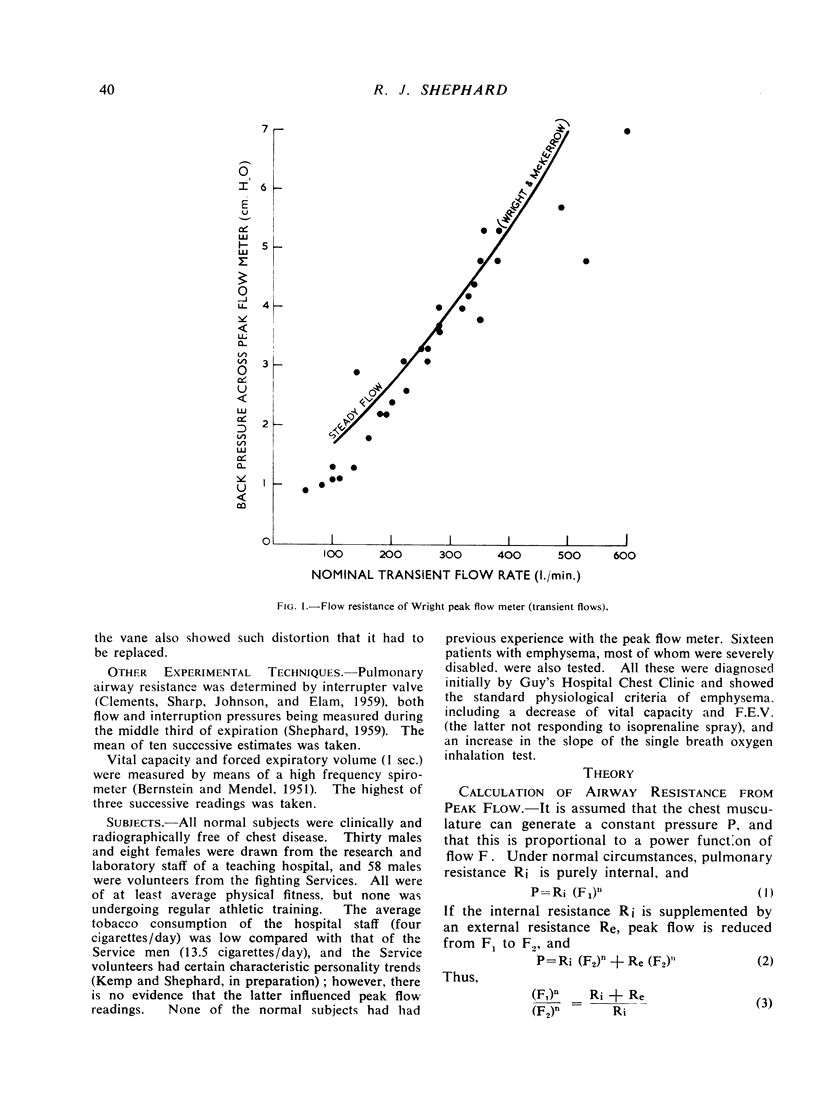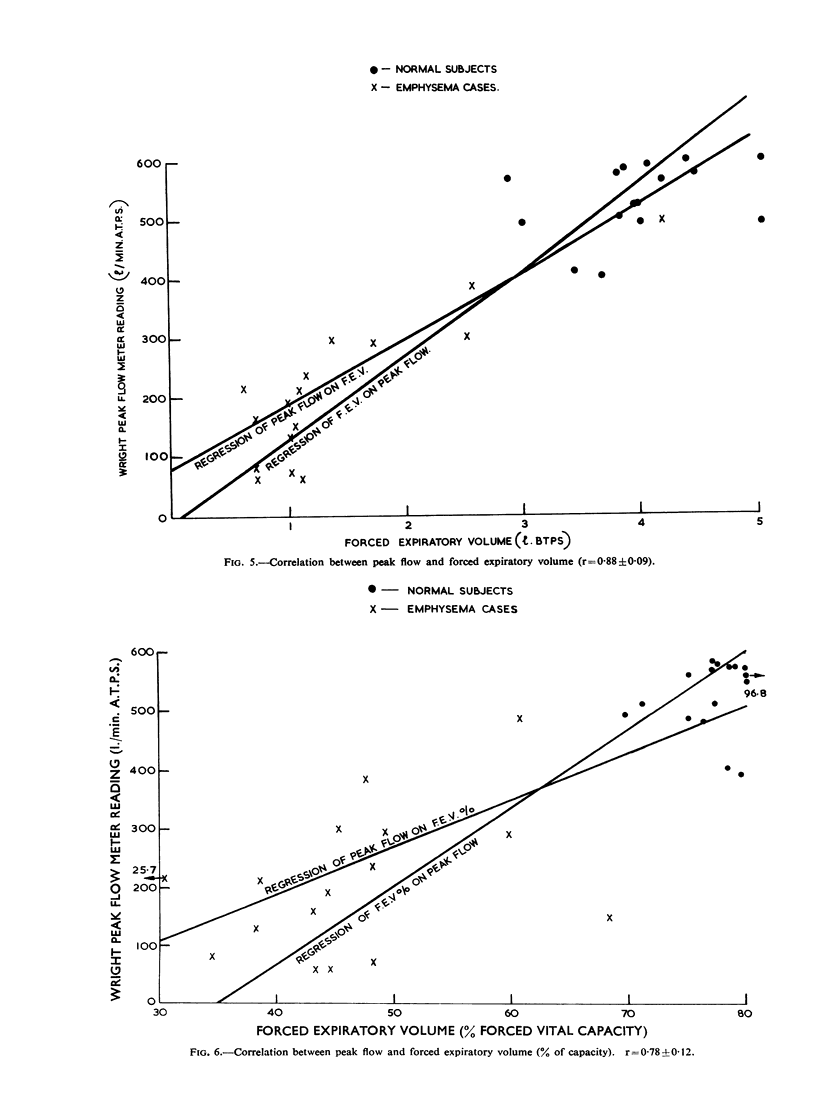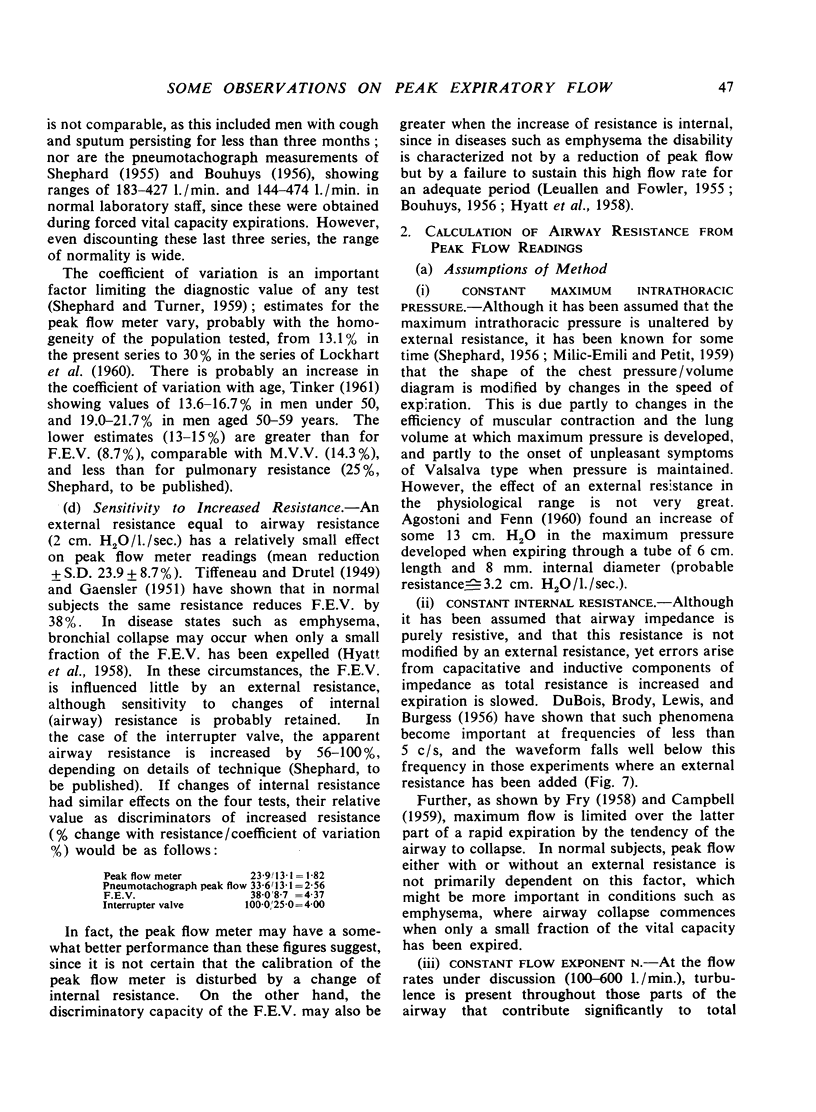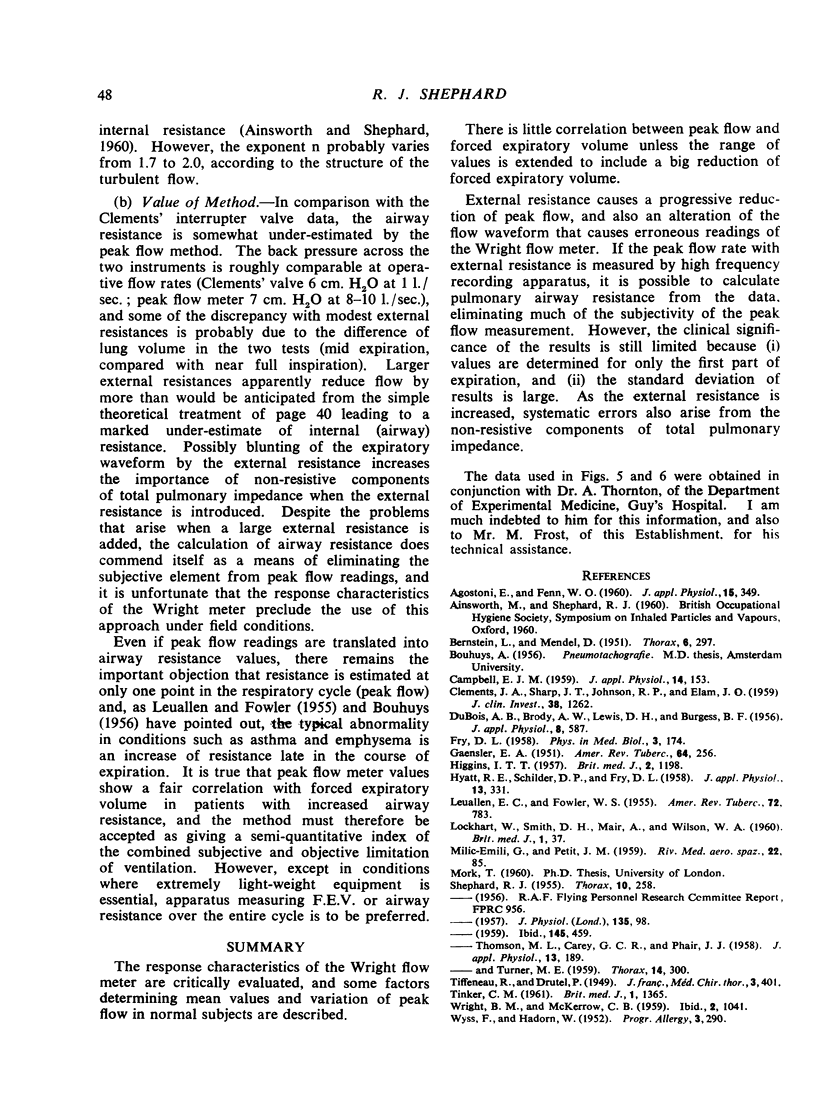Full text
PDF









Selected References
These references are in PubMed. This may not be the complete list of references from this article.
- AGOSTONI E., FENN W. O. Velocity of muscle shortening as a limiting factor in respiratory air flow. J Appl Physiol. 1960 May;15:349–353. doi: 10.1152/jappl.1960.15.3.349. [DOI] [PubMed] [Google Scholar]
- BERNSTEIN L., MENDEL D. The accuracy of spirographic recording at high respiratory rates. Thorax. 1951 Sep;6(3):297–309. doi: 10.1136/thx.6.3.297. [DOI] [PMC free article] [PubMed] [Google Scholar]
- CAMPBELL E. J. Volume-pressure diagram of the lungs and transmural pressure of the airways. J Appl Physiol. 1959 Jan;14(1):153–154. doi: 10.1152/jappl.1959.14.1.153. [DOI] [PubMed] [Google Scholar]
- CLEMENTS J. A., SHARP J. T., JOHNSON R. P., ELAM J. O. Estimation of pulmonary resistance by repetitive interruption of airflow. J Clin Invest. 1959 Jul;38(7):1262–1270. doi: 10.1172/JCI103901. [DOI] [PMC free article] [PubMed] [Google Scholar]
- DUBOIS A. B., BRODY A. W., LEWIS D. H., BURGESS B. F., Jr Oscillation mechanics of lungs and chest in man. J Appl Physiol. 1956 May;8(6):587–594. doi: 10.1152/jappl.1956.8.6.587. [DOI] [PubMed] [Google Scholar]
- FRY D. L. Theoretical considerations of the bronchial pressure-flow-volume relationships with particular reference to the maximum expiratory flow volume curve. Phys Med Biol. 1958 Oct;3(2):174–194. doi: 10.1088/0031-9155/3/2/307. [DOI] [PubMed] [Google Scholar]
- GAENSLER E. A. Analysis of the ventilatory defect by timed capacity measurements. Am Rev Tuberc. 1951 Sep;64(3):256–278. doi: 10.1164/art.1951.64.3.256. [DOI] [PubMed] [Google Scholar]
- HIGGINS I. T. Respiratory symptoms, bronchitis, and ventilatory capacity in random sample of an agricultural population. Br Med J. 1957 Nov 23;2(5055):1198–1203. doi: 10.1136/bmj.2.5055.1198. [DOI] [PMC free article] [PubMed] [Google Scholar]
- HYATT R. E., SCHILDER D. P., FRY D. L. Relationship between maximum expiratory flow and degree of lung inflation. J Appl Physiol. 1958 Nov;13(3):331–336. doi: 10.1152/jappl.1958.13.3.331. [DOI] [PubMed] [Google Scholar]
- LOCKHART W., SMITH D. H., MAIR A., WILSON W. A. Practical experience with the peak flow meter. Br Med J. 1960 Jan 2;1(5165):37–38. doi: 10.1136/bmj.1.5165.37. [DOI] [PMC free article] [PubMed] [Google Scholar]
- SHEPHARD R. J. Pneumotachographic measurement of breathing capacity. Thorax. 1955 Sep;10(3):258–268. doi: 10.1136/thx.10.3.258. [DOI] [PMC free article] [PubMed] [Google Scholar]
- SHEPHARD R. J., THOMSON M. L., CAREY G. C., PHAIR J. J. Field testing of pulmonary dynamics. J Appl Physiol. 1958 Sep;13(2):189–193. doi: 10.1152/jappl.1958.13.2.189. [DOI] [PubMed] [Google Scholar]
- SHEPHARD R. J., TURNER M. E. On the probability of correct diagnosis by pulmonary function tests. Thorax. 1959 Dec;14:300–304. doi: 10.1136/thx.14.4.300. [DOI] [PMC free article] [PubMed] [Google Scholar]
- TINKER C. M. Peak expiratory flow measured by the Wright peak flow meter. Distribution of values in men aged 30-59 who denied respiratory symptoms. Br Med J. 1961 May 13;1(5236):1365–1366. doi: 10.1136/bmj.1.5236.1365. [DOI] [PMC free article] [PubMed] [Google Scholar]
- WRIGHT B. M., McKERROW C. B. Maximum forced expiratory flow rate as a measure of ventilatory capacity: with a description of a new portable instrument for measuring it. Br Med J. 1959 Nov 21;2(5159):1041–1046. doi: 10.1136/bmj.2.5159.1041. [DOI] [PMC free article] [PubMed] [Google Scholar]


